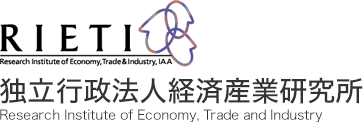| 執筆者 | 森川 正之(特別上席研究員(特任)) |
|---|---|
| 発行日/NO. | 2025年11月 25-E-106 |
| ダウンロード/関連リンク |
概要
本稿は、日本企業のミクロデータに基づき、生産性と賃金の関係、労働分配率の動向を、集計レベルの数字と企業レベルの数字の比較に力点を置いて分析する。結果の要点は以下の通りである。第一に、マクロレベルでは生産性上昇率と実質賃金上昇率が乖離しているが、企業レベルにおいて、生産性上昇率が高い企業ほど賃金上昇率が高い頑健な関係があり、生産性と賃金がデカップリングしているとは言えない。第二に、賃金の単純平均と集計値(加重平均)の動きには違いがあり、集計値の方が実質賃金の下方トレンドが大きい。第三に、ダイナミックOlley-Pakes分解によれば、実質賃金の変化に対して共分散項が押し下げ寄与をしている。つまり、付加価値シェアが大きい企業ほど平均賃金が高いという関係が弱まっている。これに対して生産性のダイナミクスは、共分散項が集計レベルの生産性を押し上げており、生産性と賃金のダイナミクスは異なる。実質賃金引き上げには生産性上昇が不可欠だが、企業の新陳代謝を通じて生産性向上を促す政策は、労働分配率を高めようとする政策とは相反する面がありうる。
(本稿は、日本語版のディスカッション・ペーパー(25-J-023)に修正を加えた上で、英語版にしたものである)
概要(英語)
Using micro-level data on Japanese firms, this study analyzes the relationship between productivity and wages, with a focus on comparing aggregate-level and firm-level figures. The main findings are as follows. First, at the macro level, productivity growth and real wage growth are diverging, but, at the firm level, there is a strong positive relationship between productivity growth and wage growth, indicating that productivity and wages have not decoupled. Second, a divergence exists between simple average and aggregate (i.e., weighted average) wage trends, with aggregate real wages exhibiting a greater downward trend. Third, dynamic Olley-Pakes decomposition reveals that the covariance term contributes negatively to changes in real wages. In other words, the relationship between higher value-added share and higher wages at the firm level is weakening. In contrast, the covariance term has a large positive effect on productivity growth. These results suggest that while productivity growth is essential for raising real wages, policies that promote productivity through resource reallocation may conflict with those aimed at increasing labor’s share of value-added.

